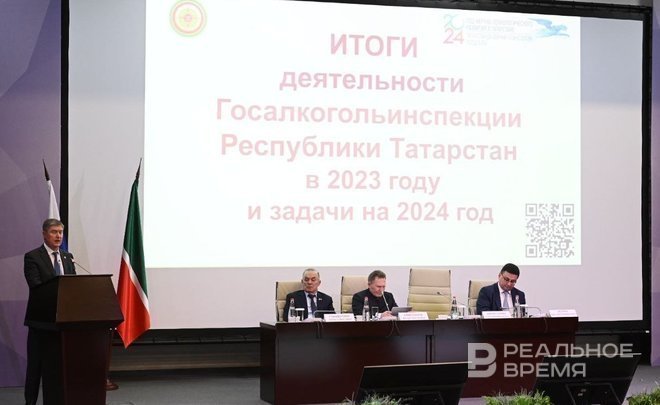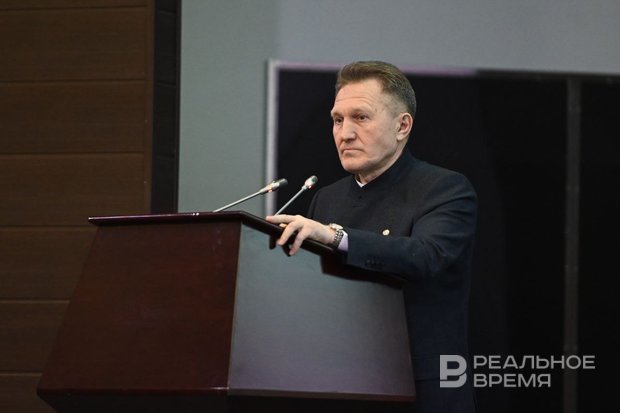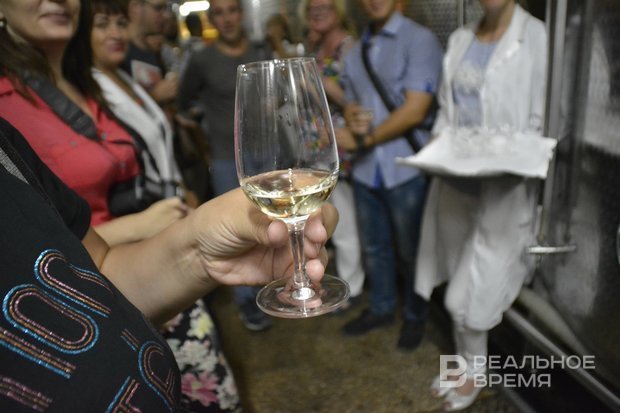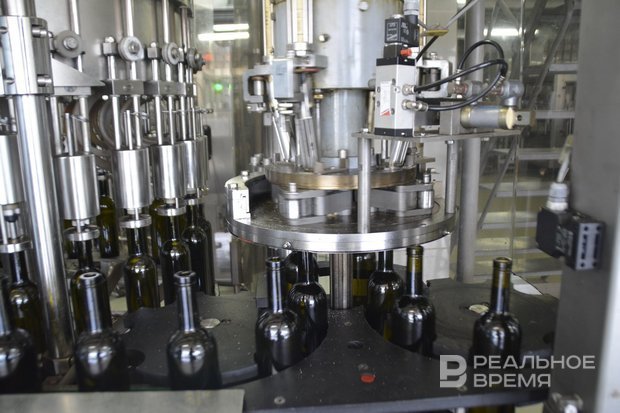Vodka and craft beer production increasing in Tatarstan

The production of alcoholic beverages is growing in Tatarstan. By the results of 2023, 10,937.3 thousand dal were produced, which is by 2% more than a year earlier. Vodka production increased by the same percentage. In quantitative terms, it amounted to 9,341.5 thousand dal. This was stated at the final board meeting of the State Alcohol Inspectorate of Tatarstan by its head, Zhaudat Akhmetkhanov.

Less alcohol, but more vodka
At the same time, alcohol production has decreased.
“Distilleries of the republic produced 5,518.9 thousand dal of rectified alcohol from food raw materials in 2023, which is 97% compared to the level of 2022 (5,686.4 thousand dal)," Akhmetkhanov noted.
Nevertheless, its shipments outside the republic increased from 1,771.7 thousand dal to 2,006.2 thousand dal. The main consumers of these products are St. Petersburg, Moscow Oblast, and Novosibirsk Oblast.
Craft beer production has increased by a third. Microbreweries brewed 200.9 thousand dal, which is by 45.5 thousand dal more than in 2022. At the same time, the total share of these products remains insignificant — only 0.4%.
As for large breweries, almost all have a reduction in volumes — from 8% to 19% compared to last year. In general, they produced 52.30 million dal, or 95% of the level of 2022 (54.94 million dal).
Tatarstan residents began to buy low-alcohol drinks more often
The volume of alcoholic beverages imported to Tatarstan is also growing slightly.
"3,503.5 thousand dals were supplied to the domestic market of the republic, including 2,266.3 thousand dals (65%) of domestic alcoholic beverages and 1,237.2 thousand dals (35%) of imported alcoholic beverages. The share of imported products increased from 31% in 2022 to 35% in 2023. The volume of supplies of imported alcoholic beverages to the domestic market of the Republic of Tatarstan in 2023, compared with 2022, increased by 2%. The supply of low-alcohol beverages increased by 13%, alcoholic beverages — by 10%, vodka — by 8%, wine drinks, champagne and sparkling wines — by 2%, grape wines — by 1%. The supply of fruit, honey, and fruit wines decreased by 26%, cognacs and brandy spirits — by 3%," Akhmetkhanov added.

According to him, grape wines prevailed in the total supply volume — 34% (in 2022 — 35%), spirits — 14% (12%), vodka — 13% (12%), cognacs — 11% (12%), champagne and sparkling wines — 11% (11%), low-alcohol drinks — 10% (9%), fruit, honey wines — 4% (6%), winy beverages — 3% (3%). The share of alcoholic beverages by type, compared with the previous year, has changed slightly: alcoholic beverages — increased by 2%, vodka, low-alcohol beverages — by 1%, fruit and honey wines— decreased by 2%, cognacs and grape wines — by 1%. The share of wine drinks, champagne and sparkling wines remained at the same level. 96% of the imported volume of alcoholic beverages was delivered to the republic's market through Kazan, 4% — through Naberezhnye Chelny.
At the same time, Tatarstan residents began to choose sparkling and strong drinks from wineries in the Krasnodar Krai and Crimea more often.
“Supplies to the region as a whole are growing due to the growing number of stores of federal retail chains. The supply of still wines remained at the level of 2022, and the supply of sparkling wines and spirits (cognacs and grape vodka (chacha) grew by about 5%," Alexander Volkanov, the deputy director general for sales of Fanagoria winery, told Realnoe Vremya.
Domestic sparkling wine is gaining popularity in the Volga Region
He added that “consumers in the Volga Region continue to prefer semi-sweet sparkling wines, but the popularity of breweries is growing every year”.
The company of Crimean winemaker Valery Zakharyin also noted an increase in sales of the main festive drink.

“In 2023, sparkling Kokur Classic Brut and a more budget line of sparkling wines Kokur and Co. were supplied to the Volga Federal District. The autochtonous sparkling Kokur Brut showed significantly high sales, by 80% higher sales than the more budget line of sparkling wines. In the new 2024 year, there is a plan to expand the representation of sparkling wines, including, for example, at ProdExpo exhibition, which will be held in early February, we will present a new line with pink sparkling Aleatico and white Aligote," the winemakers promised.
They note that the potential is far from being exhausted. However, the May increase in excise taxes may slow down the pace.
“Now a lot depends on whether it will be possible to balance the domestic wine market in such a way that after the increase in excise taxes in May Russian producers will have more favourable conditions compared to importers. Certainly, it is also important to popularise domestic wines among Russian consumers so that they begin to evaluate domestic wines at the same level in quality with products from traditionally wine-producing foreign regions," Volkanov noted.
The State Alcohol Inspectorate noted that last year imported alcoholic beverages from 69 countries of the near and far abroad were imported to Tatarstan.
“At the same time, the total volume of imported alcoholic beverages was dominated by products produced in Italy — 21% (20% in 2022), Georgia — 19% (16%), Armenia — 10% (15%), Spain — 7% (8%), France — 7% (7%), Great Britain — 5% (4%), Germany — 5% (3%), Abkhazia — 3% (3%), Belarus — 3% (0.2%), Portugal — 3% (3%), Lithuania — 2% (3%), Chile — 2% (3%)," the department stated.

Parallel imports open the door to counterfeiting
Unfortunately, the share of counterfeit goods is growing. The State Alcohol Inspectorate associates this with the parallel import of alcohol, which has been allowed since November 2022.
“Cognacs, whiskey, and rums did not meet the requirements of GOST for organoleptic parameters (there was an aroma with tones of ether and acetone); also, low content of higher alcohols and medium esters was found in these samples. For this reason, out of 163 rejected samples, 44 (30%) were assessed as not conforming to the declared category. Synthetic dyes were found in red fruit wines. In total, in 2023, Tatexpertcenter Testing Laboratory State Institution tested 363 samples of products from manufacturers of alcohol and alcoholic beverages of the Republic of Tatarstan, the department stated.
Besides, in 2023, studies of more than 1,600 samples of alcohol-containing products were continued: examination of alcohol, alcoholic beverages, glass-washing liquids, lotions.
“Experts of the laboratory of Tatexpertcenter checked 1,635 product samples and issued 52 expert opinions. Of these: alcoholic beverages and alcohol — 1,562 samples, 1,477 (94.6%) were rejected; cosmetic products — 47 samples, 25 (53%) were rejected; glass-washing liquids — 26 samples, 23 (89%) were rejected, the report says.

Expert studies were also conducted at the request of the Investigative Committee of Russia for the Republic of Tatarstan and departments of the Ministry of Internal Affairs. At the same time, 96% of 1,143 samples were rejected at the request of the Investigative Committee, and 98% of 162 at the request of the Ministry of Internal Affairs did not meet the requirements of regulatory documentation for products.
The State Alcohol Inspectorate clarified that the samples of alcoholic beverages submitted for analysis by law enforcement and regulatory authorities were made from low-quality raw materials containing synthetic dyes, flavours and other additives that mimic the organoleptic properties of beverages.
At the same time, there is less counterfeit vodka and moonshine. 156,272 liters were withdrawn from illegal circulation in 2023 (167,349 liters — in 2022).